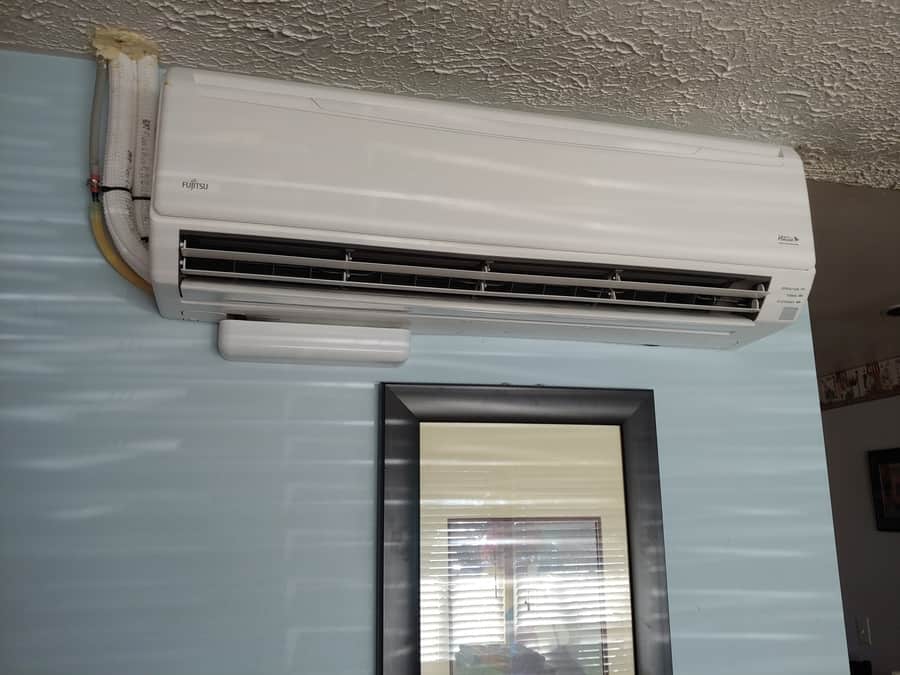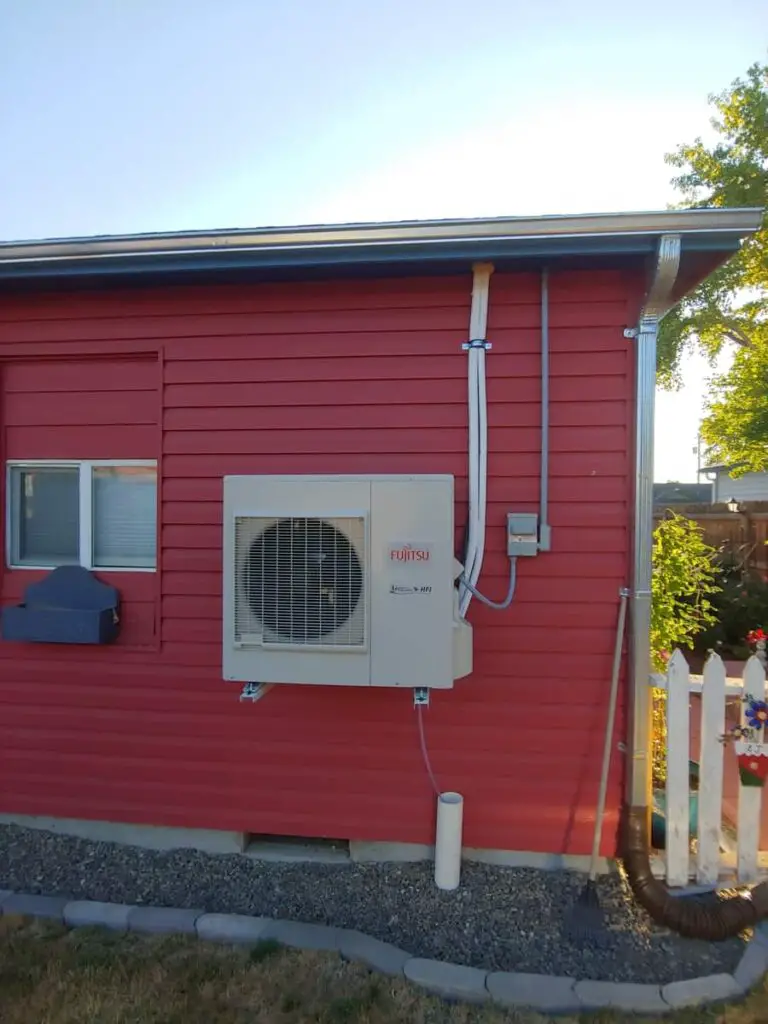Finding just the right place to install the components of a ductless mini split is critical to the comfort and performance of these highly efficient units. Split means they are divided into two main parts. The outdoor units come in cooling only units or heat pumps and the indoor unit is referred to as a head. If you want to know some important things to consider before investing in a mini split, go to this article.
A mini split head can be installed on almost any wall within your home, but with some caveats. The least expensive installation will usually be on an outside wall. When choosing an inside wall for the head location you will invariably pay more in installation costs.
The beauty of installing the head on an outside wall is the ease of installation. The refrigeration lines that connect the indoor and outdoor units are easily routed through the wall along with a power cable and the condensate line that drains off the the condensation from the head to the out of doors.
The reason the labor goes up when choosing an inside or interior wall to mount the head is because all the lines that connect the two unit have to be routed either through an attic or a crawl space. Sometimes the lines can be run along the wall exposed but looks aesthetically lousy in my opinion.
Notice the condensate pump mounted under the head in the image below. They add to the cost plus labor of the installation. This customer wanted to build his own cover over the line set that pokes up into and across the attic to the outdoor unit.

I get to hear a lot of opinions about the appearance of installing a mini split on interior walls as it is. Adding exposed lines only deters from the overall looks of things that may have a bad rap to begin with.
They make line covers that go over the lines of copper, power wire, and drain. I’ve provided a link here for both Home Depot or Amazon so you can see a variety or makes and manufacturers that are paintable and easy to install.
Can Mini Split AC Lines Be Run Inside The Walls?
That’s always an option to run the lines inside the wall. Vertically is usually easier than horizontally. Horizontal runs inside a wall would include notching every stud to allow the lines to recess into the wall to be covered over by whatever you removed, which in most cases would be sheet rock.
I have a friend whose entire business is patching sheet rock. He’s a expert in matching texture. That’s who you’ll need to find. Maybe not him, but someone who can make it look like the wall had never been cut into.
Hopefully you kept the left over bucket of paint that matches also and hopefully it’s still usable.
I have another friend who recently built an addition onto his kitchen. Running line sets in newly framed walls without insulation and sheet rock is a piece of cake.
Having refrigeration copper lines inside of unfinished walls can be hazardous to the health of your new mini split if the sheet rockers are careless and willy nilly run screws where not enough care was taken to prepare the lines.

I’ve seen sheet rock screws penetrate copper lines and become an absolute nightmare to locate and repair. Cover every spot where a possible screw could damage a refrigeration line with a metal plate.
Vertical runs either up or down the wall from the head are slightly easier. Your will enter the crawl space or the attic and then have the line set on the exterior of your home where you can use these covers again to help the aesthetics of all the lines being exposed.
Best Places To Put A Mini Split System
Many a good installation has suffered by poor location. You probably wonder how I can call it a good installation if it’s located improperly. I was referring to the workmanship.
The installers best practices, good flare connections, evacuation, and charging of the unit with refrigerant or Freon as most people know it by brand name can all be defeated by placement of the equipment.
So an installer can do all the right mechanical things and screw up the location to deliver the proper air flow into the room. And think about the outdoor unit being place by a bedroom window where even though these units are amongst the quietest on the market even a slight noise can be irritating as you try to sleep.

The phrase location, location, location is very applicable to not only real estate, but mini splits also.
I’ve noticed that with a lot of the installations I’ve done that you don’t have a lot of choices. It may come down to dividing up the area and installing two or more heads depending on the size and layout of you home.
What’s The Proper Distance From The Ceiling For A Mini Split Head?
Each manufacturer has a little bit different thing to say regarding the clearance from the top of the heat to the ceiling. There are two reasons for this gap.
- Air flow
- Room to lift the lid to access the filters
Many if not all ductless units pull air through the top and discharge the conditioned air out the louver at the bottom. One of the biggest and best rules of air conditioning is air flow. Restrict the air flow and suffer the consequences of poor heating and cooling.
Can’t access your filters easily and you will neglect the head ache you created by not reading the instructions and allowing enough room above the unit to remove the filters and clean them.

I’ve seen the allowable clearance as little as a couple inches but the last unit I installed the instructions said about 7 inches. I had to install my own unit in our apartment and had no choice other than to install it close to the ceiling. Getting the lid up high enough to clean the filter was a bit harder than I thought it would be.
Conclusion For Mini Split Head Location
I know of an installation of a mini split that looked absolutely hideous. My daughter had it installed in her duplex. I won’t discuss here why she didn’t have me do the job, but it had to do with rebates which I refuse to participate in the programs.
After a winter of the unit running constantly and not heating the apartment she finally added another unit to the back end near the bedrooms. With some improvement gained she proceeded to arrange for the relocation of the first unit.
The hideous part was the refrigeration lines running clear across the front of the apartment. The covers were large and squared off metal channel. Something made in there shop.
I thought it amazing how some company could bodaciously add a system with no insight to how distracting those lines were to the front of a nice building.
Be sure to plan your installation with your contractor and make sure you can live with the end result.
